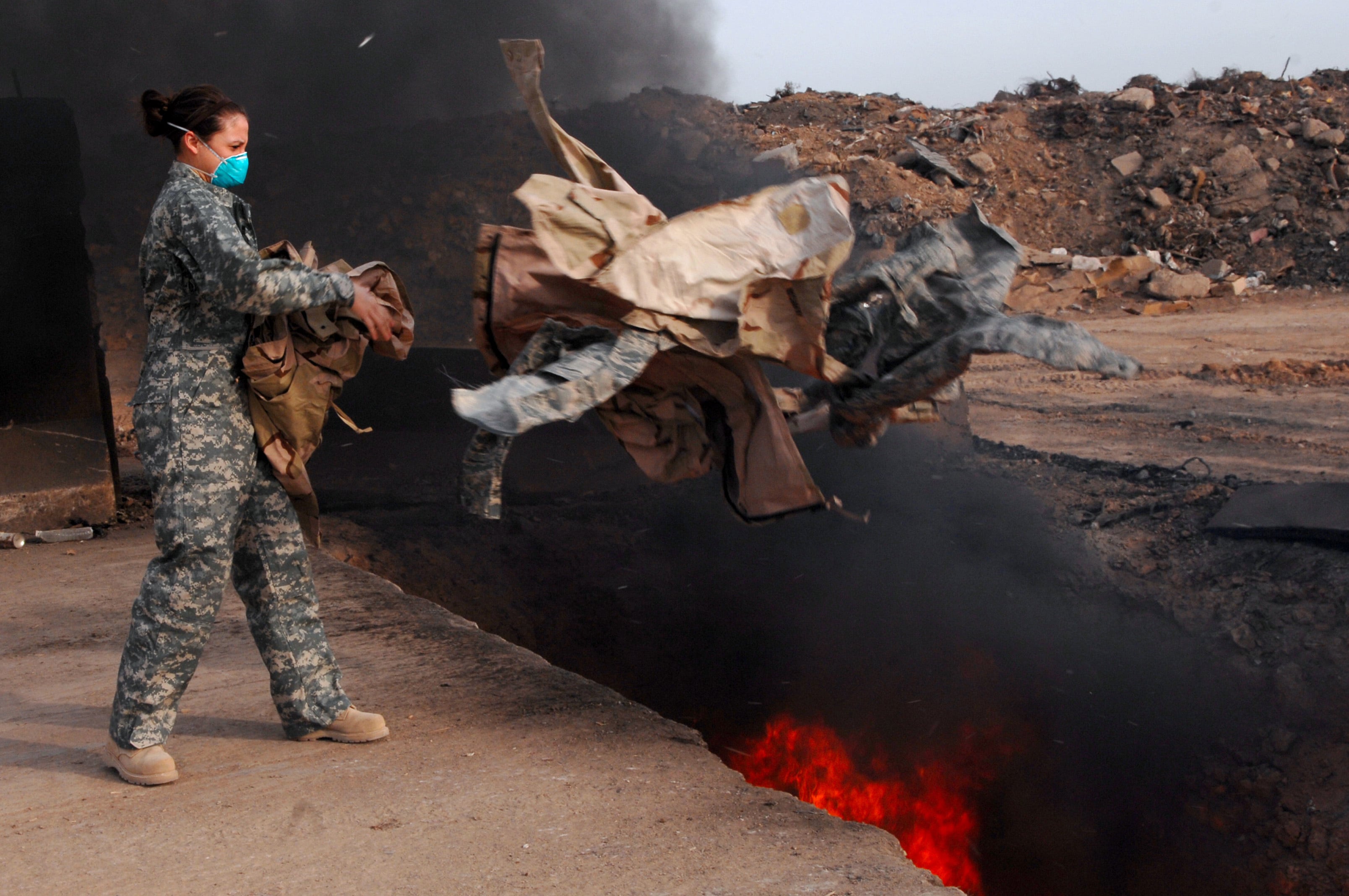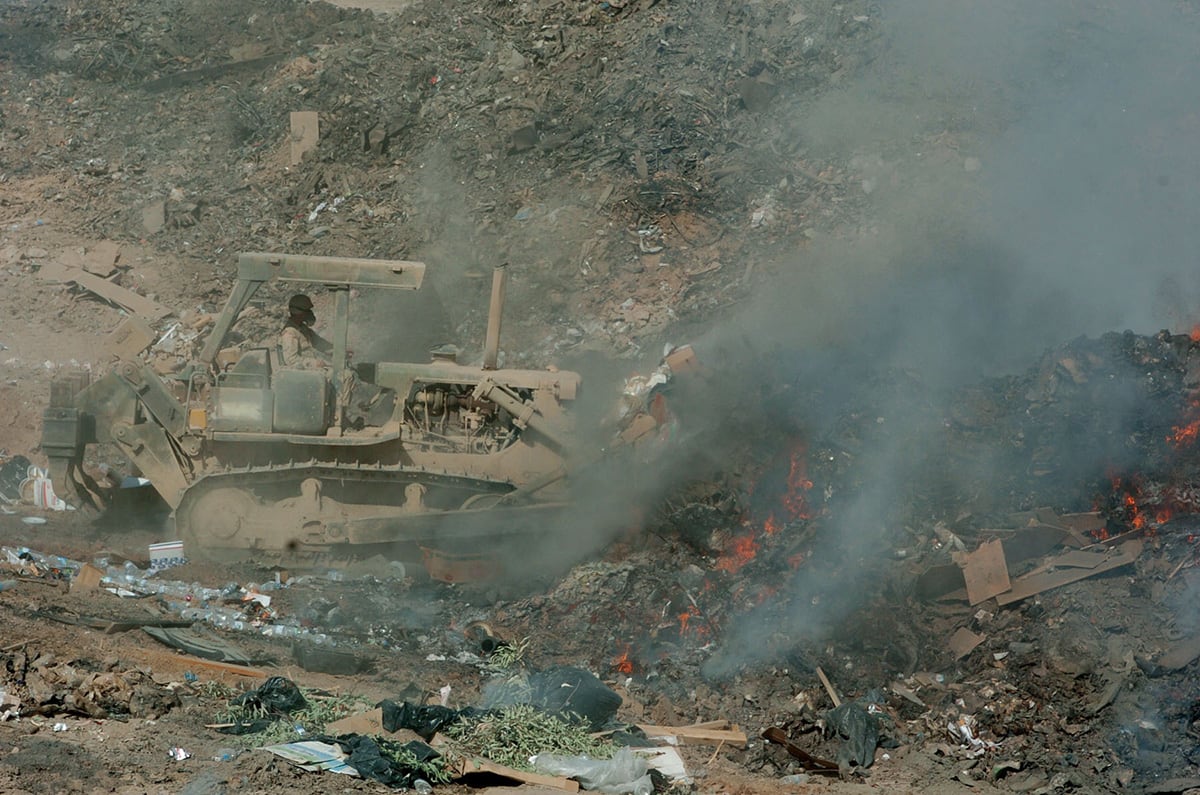The U.S. Supreme Court has rejected an appeal in which veterans sought to hold private companies responsible for their use of open-air burn pits that have been linked to scores of often fatal illnesses, from cancers to neurological damage.
The high court let stand an appellate court ruling that decided more than 60 separate lawsuits could not move forward.
Plaintiffs allege that KBR, formerly owned by Halliburton Corporation, and other companies dumped tires, batteries, medical waste and other materials into the burn pits downrange. The smoke from those pits caused health issues in more than 800 veterans in the lawsuits, attorneys claim. At least a dozen affected have since died.
Judges with the Virginia-based 4th U.S. Circuit Court of Appeals, who issued the ruling in last year’s appeal, said that KBR had little discretion in how to dispose of the waste, as they were under military control and the use of the burn pits was a military decision.
They said the lawsuits amounted to a “political question” that Congress and the president should resolve, not the courts.
The law firm Motley Rice, LLC, representing plaintiffs in the case, issued a statement to Military Times Monday morning.
“For nearly a decade, we have been working in the court system to secure justice for our veterans who have come home and suffered from debilitating diseases as a result of their exposure to burn pits in Iraq and Afghanistan," the statement said. "Over and over, KBR, a military contractor with the duty to handle waste on bases, did not do so with care. KBR operated burn pits that burned everything from plastics and human waste to car parts. We are disappointed that the Supreme Court declined to hear this case. We encourage all of those impacted and those who care about our veterans to contact their local representatives to push for change.”

Motley Rice attorney and Army veteran James Ledlie told Military Times that KBR’s defense argued that the only way to control actions by contractors was through military oversight.
But, Ledlie said, that would put an enormous burden on the limited number of military staff available to oversee sometimes complicated contractor work in combat zones.
The high court decision ends this litigation but, more importantly, it could give contractors an argument on which to lean in future cases regarding negligence or harming troops, he said.
RELATED

However, Ledlie remained optimistic for future cases that might raise this same question.
“The decision in this case is limited to the facts of this case, and in this country there has been a long history of access to the courts to address acts of negligence, even those that touch on the military, and I would hope that the courts would remain open to that history,” Ledlie said.
An advocacy group that continues to work in helping veterans and service members and their families who’ve been affected by burn pits challenged President Donald Trump and Congress to do more to help:
“It’s been nearly a decade since we began advocating for those service men, women and widows plagued by this generation’s Agent Orange. We are living proof of the damage already done. We demand accountability. As Americans it is our moral obligation to care for the war heroes and contractors affected, many of whom were veterans,” wrote Rosie Torres, spokeswoman for the nonprofit Burn Pits 360.
“While veterans endure illnesses such as brain tumors, lung diseases, toxic brain injury and cancer, our government has decided to leave our fate at the hands of Congress. While families bury their loved ones as a result of tax payers dollars poisoning our troops, we are now left to fend for ourselves,” Torres wrote.
The advocacy group has the following initiatives as part of its goals:
- Improving the registry so that it can be an effective tool for research, monitoring and identifying the health consequences of these exposures, to include mortality.
- Conducting more and better research into the health consequences of these exposures and to develop effective treatments to improve veterans’ health and lives.
- Establishing evidence-based clinical practice guidelines and a specialized care program for respiratory and co-morbid conditions, including pre- and post-deployment pulmonary function testing.
- Creating a scientific federal advisory committee related to these exposures and health outcomes.
- Improving VA disability compensation claims for afflicted veterans, including establishing presumption of service-connection for debilitating symptoms and diseases that have been linked to these exposures.
KBR and Halliburton attempted to have the case dismissed but failed. The Supreme Court declined to hear the case in 2015, before the most recent ruling was issued last year.
Though burn pits were in use as early as during the invasion of Iraq and continued to be used in both Iraq and Afghanistan through most of the duration of the wars, guidance that such pits should be placed far from areas near troops wasn’t published until 2011.
The Department of Veterans Affairs estimates that 3.7 million veterans and service members were exposed to the toxic fumes from burn pits in both theaters.
And links remain elusive because burn pit sites, and what was burned in them, have not been made readily available or such information has not been recorded accurately.
The Protection for Veterans’ Burn Pit Exposure Act of 2018 remains in subcommittee. It would have the VA presume service connection for veterans with illnesses related to open burn pit exposure.
The following list includes some, but not all, of the symptoms, diseases or disorders associated with burn pit exposure:
Asthma, breathing restrictions, cancers, chronic bronchitis, recurring infections, cramps and severe abdominal pain, diarrhea, leukemia, lung cancer, nose bleeds, pulmonary injuries, bronchiolitis, severe heart conditions, severe headache, skin infection, sleep apnea, throat infections, ulcers, unexpected weight loss, vomiting, and weeping lesions on extremities.
Information from the Associated Press was included in this article.
Todd South has written about crime, courts, government and the military for multiple publications since 2004 and was named a 2014 Pulitzer finalist for a co-written project on witness intimidation. Todd is a Marine veteran of the Iraq War.




